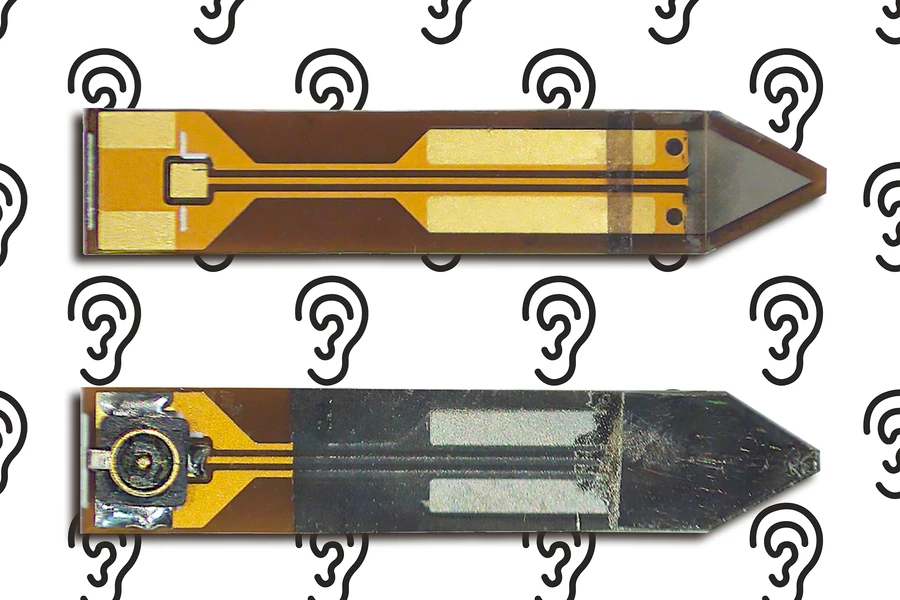While cochlear implants do indeed allow some deaf people to hear, they also incorporate potentially problematic external components located on the side of the head. That could soon change, however, thanks to an experimental new implantable microphone.
Cochlear implants are used to address what's known as sensorineural hearing loss, which occurs when nerve endings within the inner ear's cochlea cavity have been damaged. An implant bypasses those dysfunctional nerve endings, directly stimulating the undamaged cochlear nerve itself.
With a typical cochlear implant, the external components include a microphone, a speech processor that enhances voices in the audio picked up by that microphone, and a transmitting coil that rests against the skin. The implanted components consist of a receiver that picks up the audio signal from the transmitter, a stimulator that converts that signal into electrical impulses, and electrodes that use those impulses to stimulate the cochlear nerve.
Because the external components are somewhat fragile and obtrusive, users have to take them off when swimming, sleeping, or engaging in rough-and-tumble activities such as sports. Additionally, some people find the appearance of the components off-putting, to the point that they may actually forgo getting an implant.
That's where the new "UmboMic" microphone comes in, as it would eliminate the need for any external components. Incorporating technology developed in a previous study, the prototype device was created by scientists from MIT, Columbia University, Harvard Medical School, and the Harvard-affiliated Massachusetts Eye and Ear hospital.

The fully flexible implant is about the length of a grain of rice, measures just 200 micrometers thick, and is made of a printed circuit board sandwiched between two layers of a biocompatible piezoelectric material called polyvinylidene difluoride (PVDF). Piezoelectric materials produce an electrical charge in response to applied mechanical stress.
The mic is designed to be implanted inside the middle ear, with its triangular tip resting against part of the eardrum known as the umbo. As sound waves enter the ear, they cause the umbo to vibrate inward and outward, bending the tip of the UmboMic back and forth as it does so. That bending action causes the device to produce electrical signals.
Those signals are quite weak, however, since the umbo moves by only a few nanometers as it vibrates. For this reason, their strength is boosted by an integrated amplifier. Those boosted signals travel up a wire to a small processor module implanted beneath the skin above the ear. The processed signals then proceed from that module to electrodes that stimulate the cochlear nerve.

Importantly, the UmboMic is also designed to minimize electrical "noise" that could hamper its performance.
One of its layers of PVDF produces a positive electrical charge, while the other produces a negative charge. Because electrical interference affects both of the charges equally, the device's amplifier "subtracts" the difference between the two and passes that subtracted signal along to the processor.
MIT's Prof. Jeffrey Lang, co-senior author of a paper on the research, tells us that the amp is the only component of the system that requires a battery. What's more, that battery could be wirelessly recharged via an external charger as needed.
The UmboMic has so far been tested on human ear bones extracted from cadavers, with promising results. Testing on live animals will be the next step.
The paper was recently published in the Journal of Micromechanics and Microengineering.
Source: MIT




